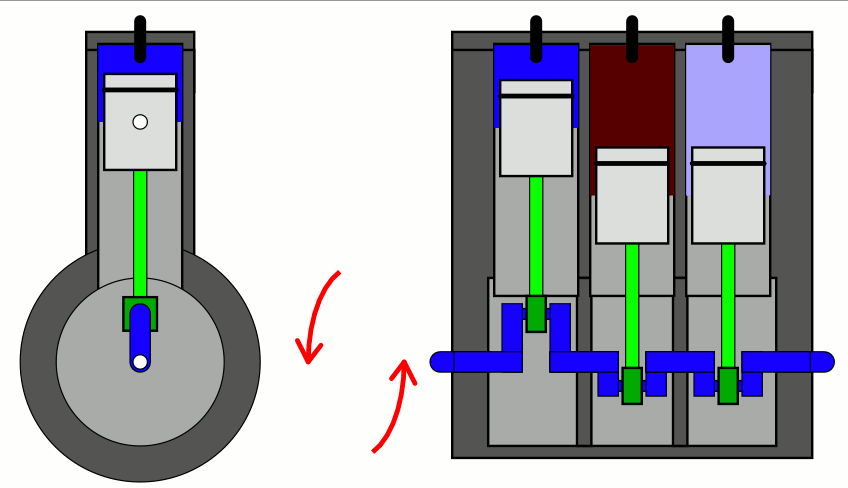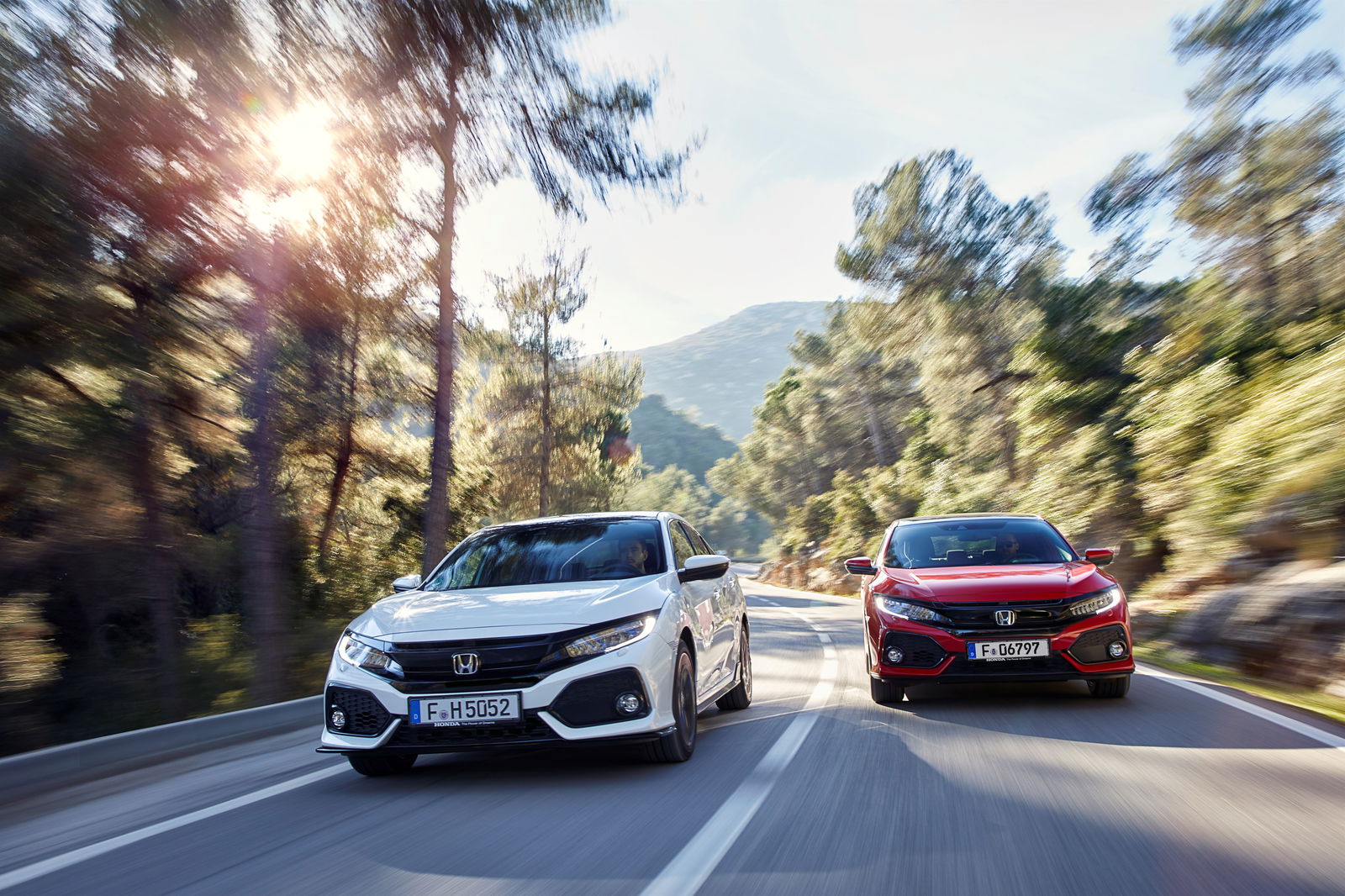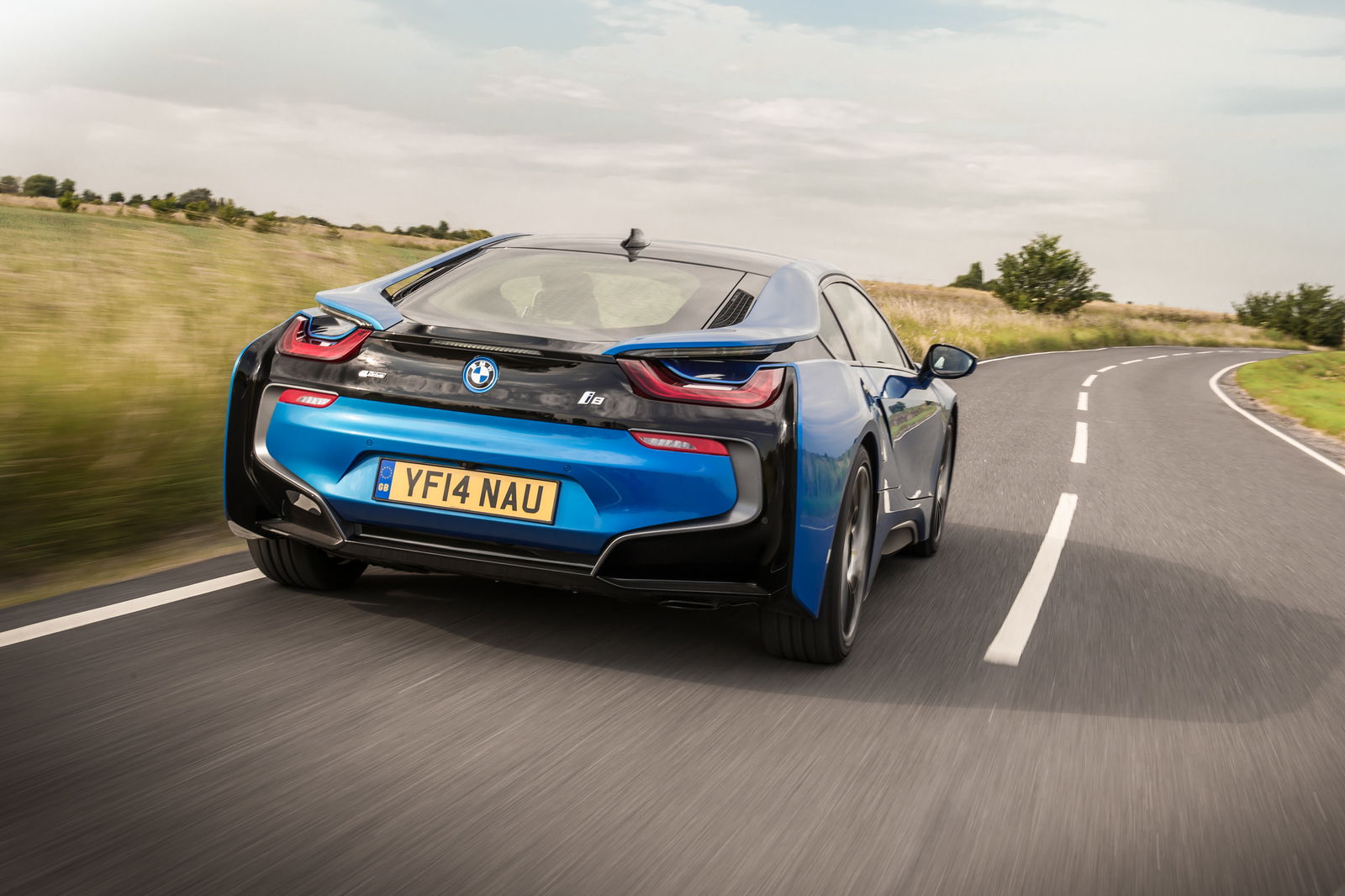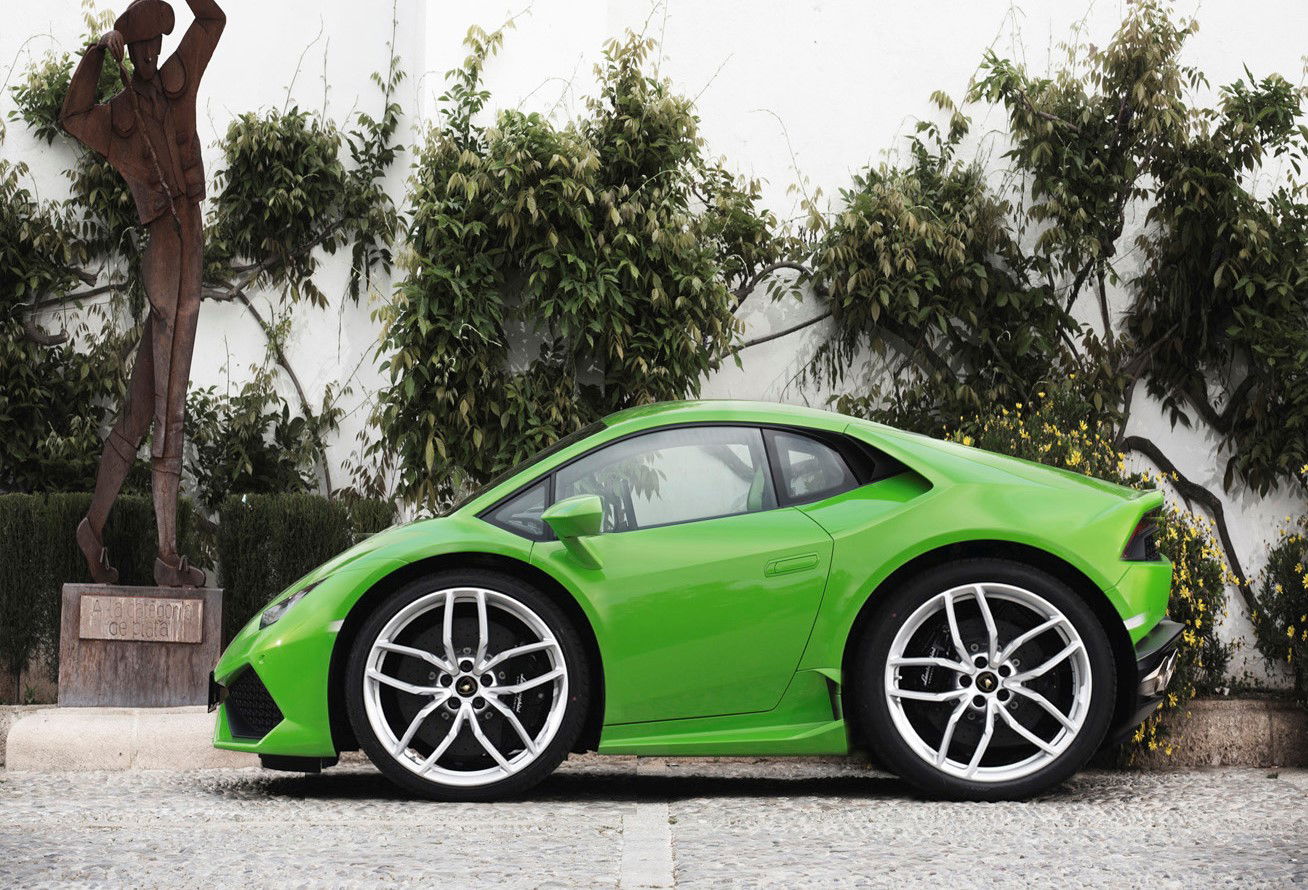Here's The Problem With Three-Cylinder Engines

Three cylinder engines are a big deal now. The age of downsizing has seen myriad three-pot options appear from VW Group, BMW, Honda and more. Usually featuring turbocharged assistance, power is rarely an issue, however, they aren’t always the most pleasant engines to experience. But why is that?
An inline three-cylinder engine is essentially a straight six engine lopped in half. Normally in a straight six, the two outer cylinders reach top dead centre (TDC) in unison, with the other four cylinders reaching specific angles of rotation to balance the primary forces, secondary forces and rotational torque of the engine nicely.
In a three-pot, piston one (the front piston) reaches TDC while the other two are 120 degrees away from either TDC or bottom dead centre (BDC). This means that the primary and secondary forces are balanced vertically, but the torque over the reciprocating pistons is not matched in unison like in an I6. Instead, the engine is trying to naturally rotate and flip over on itself. So to avert this, a balancing shaft is needed to counteract the twisting force.
The torque inbalance (shared with inline-five engines) makes for a rattling powertrain as the engine tries to rock from end-to-end, even when balanced as much as physically possible. This is due to the weight of the balancing shaft that the crankshaft has to work against, making these engines less free-revving than their more-balanced counterparts. Counterweights can also be machined into the crankshaft itself but they also add weight, decreasing its ability to rotate freely.
Also, due to the fact that ignition occurs every 240 degrees, the crankshaft journals are spaced 120 degrees apart. This means that there will be a significant proportion of crankshaft rotation (60 degrees) when no power stroke is occurring. That reciprocatory feature leads to the lack of smoothness in power delivery and large amounts of vibration that three-cylinder engines are notorious for. The rough-running engine behaviour will be emphasised at lower engine speeds especially, due to the lack of power strokes occurring.

Despite these shortcomings, there are plenty of reasons why many manufacturers these days are choosing three-cylinder engines. Firstly, they’re lightweight and compact which allows them to be placed in multiple platforms throughout a manufacturer’s range of vehicles. For example, BMW uses the three-cylinder powertrain from the Mini in its i8 hybrid sports car.
In terms of performance, one less cylinder than a standard inline-four engine makes for a decrease in frictional losses from the moving components. This factor along with smaller displacements amounts to strong economy figures.

With lower-spec models in car line-ups often leaning towards three-cylinder powertrains, it’s probable that many ‘first cars’ bought from new will feature these small engines, depending on how the expected move away from downsizing in the industry pans out.
With the reduced manufacturing costs when compared to an I4, the next few years could become the heyday of the three-cylinder engine until the next leap in IC technology occurs. Although this may seem a gloomy future compared to what we’re all used to, with a touch more refinement, the three-pot could make for an eager and spritely companion.
Have you ever owned a three-cylinder car? Does a smaller displacement three-pot appeal to you over a more generic inline-four? We’d like to know your opinion below.

Comments
I have a 2015 focus with the 1 litre 3 cylinder ecoboost and I love it . Though it is a little rough at times the economy is amazing only slightly less than say a golf tdi you make up that difference in the maintainence costs like filters and Def fluid. I have a cold air intake on it that amplifies the nice little 3 cylinder growl while accelerating and with the little turbo is quick enough to out run the new sentra and other base model compact cars and in new York city it prevents me from wanting to drive excessively fast and get pulled over as in my last car which was a 6 litre pontiac gto. All in all a great commuter city car.
the polo i used to have had a DOHC 3 cylinder and made a good noise but was rough and the most unreliable engine ive ever come across.
and it was my first car
https://m.youtube.com/watch?v=dvNrMMhPoFc
The greatest street legal 3 pot ever.
I have not tried the Honda motor but I hear it is disappointing. I have driven both the Ford Ecoboost 1.0 and BMW 1.5 triples and there is no rock at all. The Ford has a cleverly designed flywheel and the Beemer a balance shaft. I found both very smooth (smoother than a lot of inline fours), free revving and both had a nice sound when revved: lots of character. Would happily own either.
Had a Mini Cooper with the 1.5 I3 as a hire car the other day, fantastic little motor. Had plenty of go when needed, seemed smooth and got 52mpg out of it.
Certainly didn’t seem unrefined but then most cars after the S2000 seem refined…
I owned Yamaha 3 cyl motorbikes in mid seventies and I had a bad experience. Since then I had 2 Triumph sprint that I enjoyed all the way, powerful, nice sounding and cheap on gas. After that I had 2 Minis with the 1,5l 3 cyl and I could not be happier, peppy enough to avoid the Cooper S cheap on gas and with a nice sound when not warming up in below 0;temperature I would strongly recommend 3 cyl if they are built and designed by conscious people
Pagination